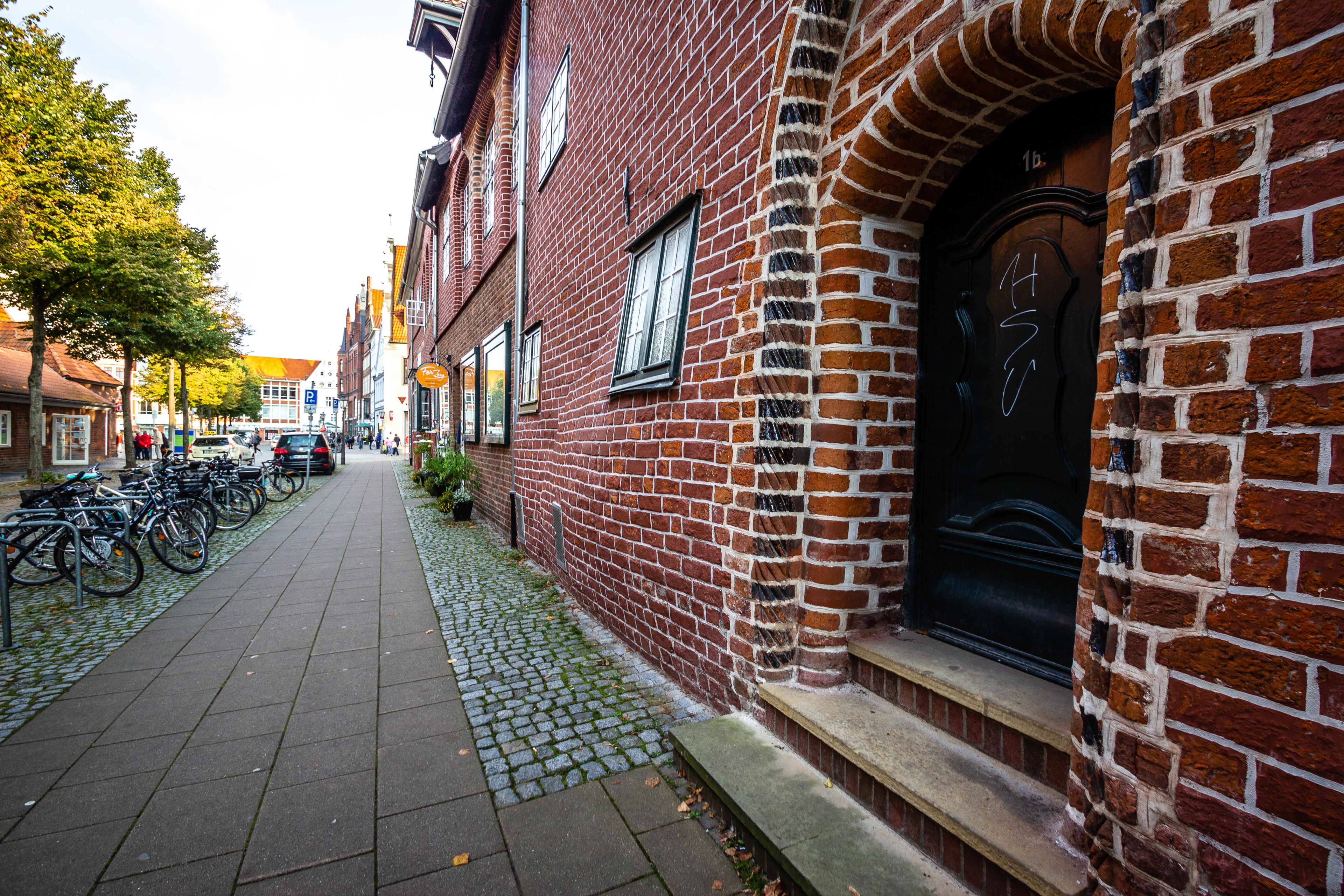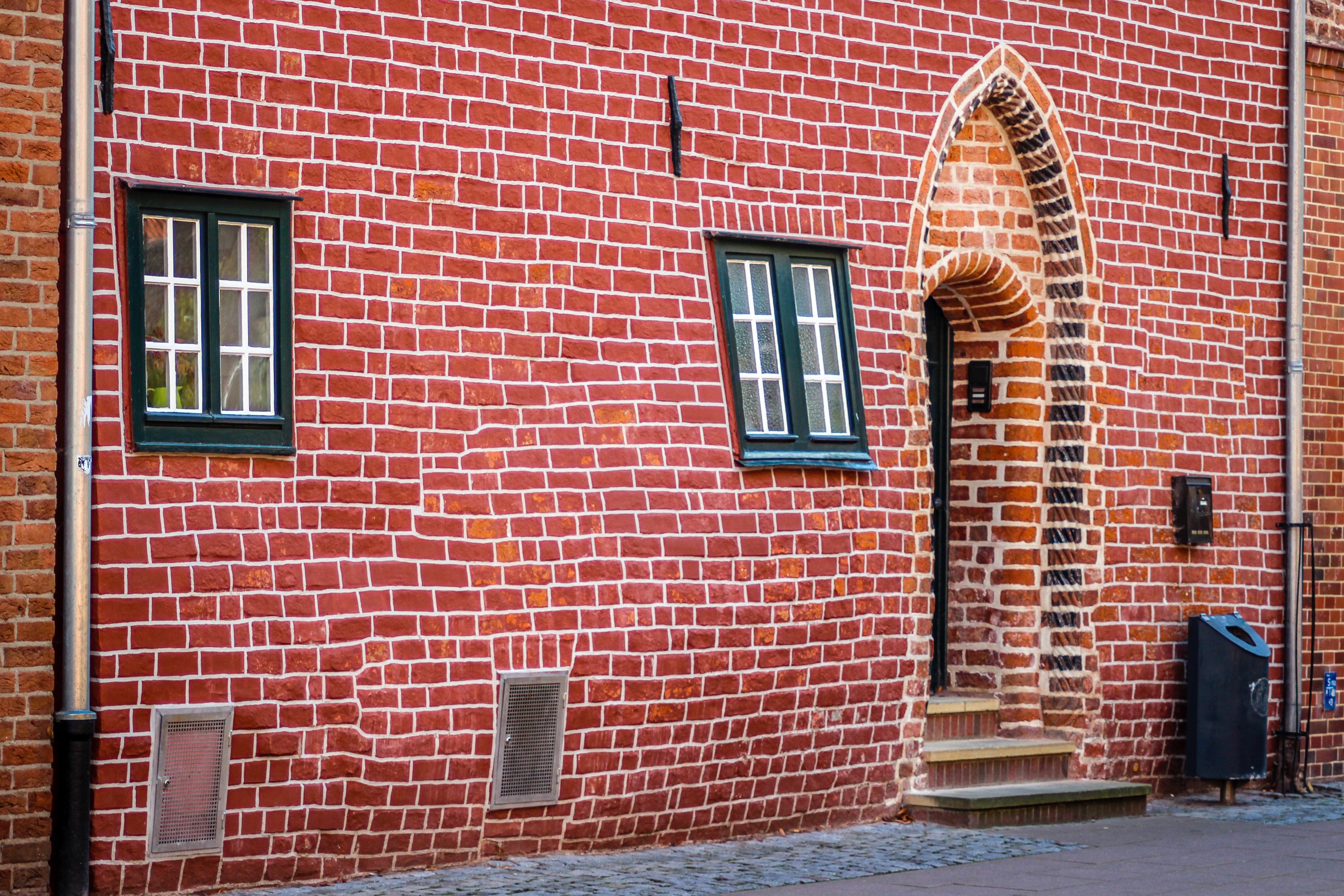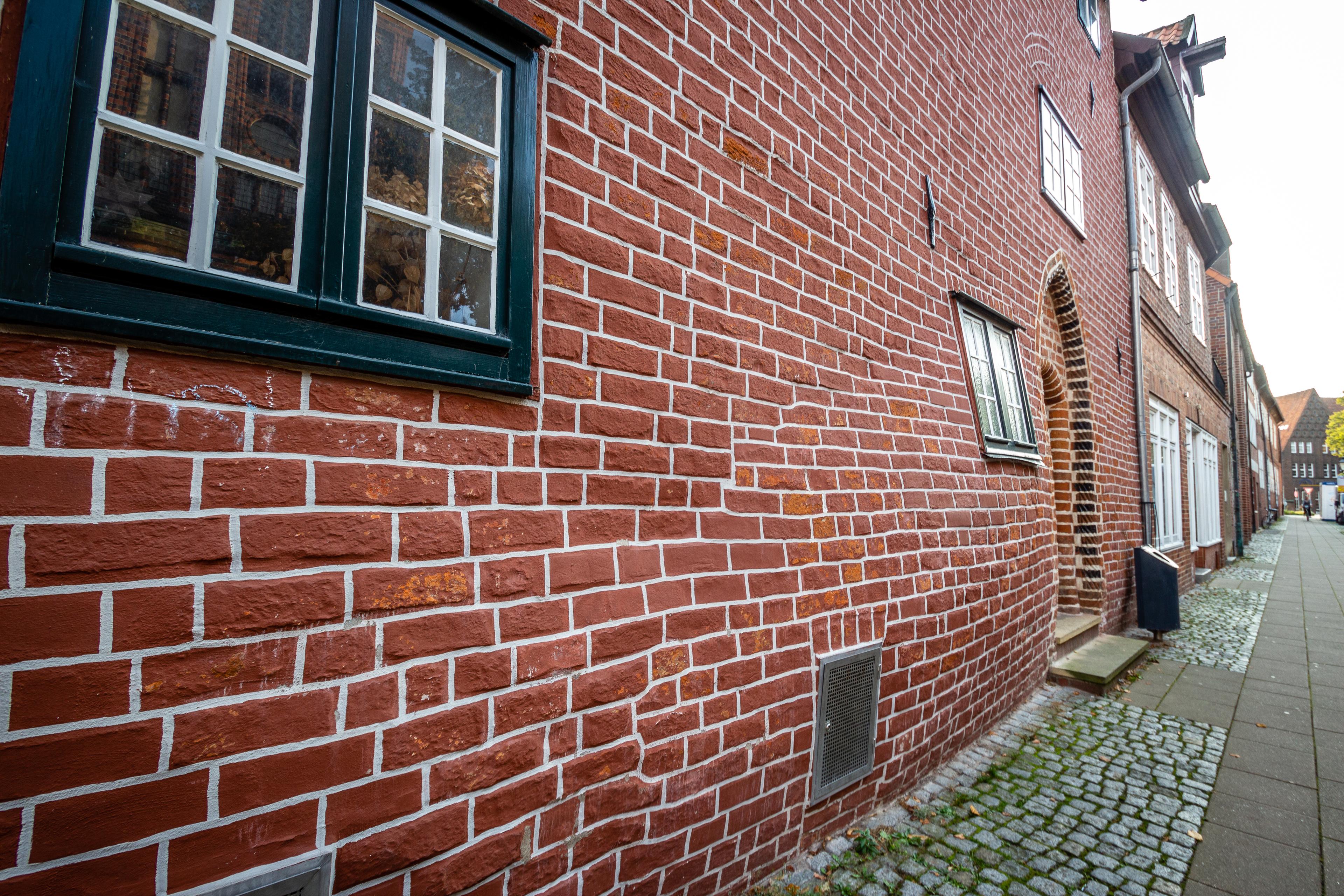The pregnant house



Lüneburg's "pregnant walls"
In Waagestraße in Lüneburg you can visit an absolute unique feature: the pregnant house.
Why are the walls potbellied?
The bulbous shape of the house wall is created by absorbing moisture. When houses were built from brick in the 12th century, the Lüneburgers used the gypsum and anhydrite from the Kalkberg as lime mortar replacement. If humidity from indoors, rainwater or groundwater penetrates the masonry, a chemical process begins in the masonry.
In the moist, cold outer wall, the anhydrite reacts to gypsum while increasing its volume, while no reaction takes place in the warm, dry wall in the building. So the walls expand on the outside.
Since the swelling is not strong enough to lift the whole house, it pushes the outer brick layer outwards and forms a "belly".
Next to the "pregnant house"
Right next to the "pregnant house" is the birthplace of the composer Johann Abraham Peter Schulz. He is the originator of well-known tunes such as "Der Mond ist aufgegangen" ("The moon has risen") and "Ihr Kinderlein kommet" ("Oh, come, little children"). A memorial plaque on the house commemorates the composer